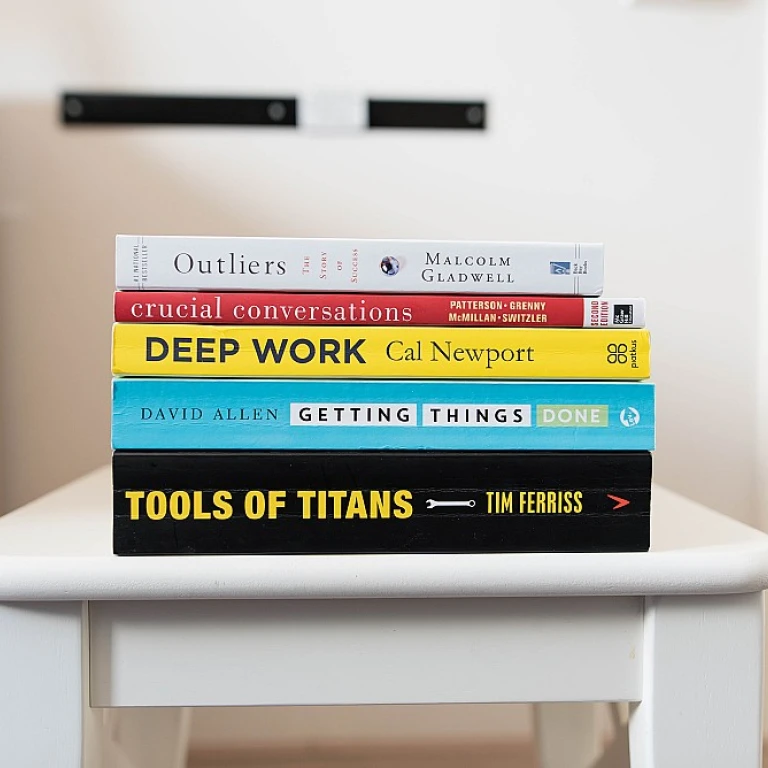Understanding the need for a future-ready workforce
Why a future-ready workforce matters
Everybody's talking about the future of work these days. But why does it even matter? Picture this: your business is cruising along, but then a sudden shift in technology or market needs throws a wrench in the works. Without a future-ready workforce, you might find yourself scrambling to catch up.
Adapting to rapid changes in technology
We're living in a tech-driven era where innovations like AI and machine learning evolve at breakneck speed. A report by McKinsey found that by 2030, about 14% of the global workforce will need to change their occupational category due to automation and AI. If your team is ready, these changes are opportunities rather than obstacles.
Maintaining competitive edge
Think about it: every industry is getting more competitive. Companies with agile, adaptable teams are consistently outpacing those stuck in old ways. According to a study by Deloitte, businesses that prioritize workforce agility are 3 times more likely to outgrow their competitors. A proactive approach isn't just a nice-to-have, it’s a must.
Attracting and retaining top talent
People want to work where they can grow. Offering opportunities to reskill and upskill is a massive draw. In fact, a LinkedIn report highlighted that 94% of employees would stay longer at a company if it invested in their career development. People aren't just assets; they're the heart of the business.
Aligning with strategic goals
Your workforce's adaptability directly impacts your ability to hit strategic milestones. If your team is future-ready, they're better equipped to pivot and align with long-term objectives. For more insights on alignment, you might want to read this article on employee retention strategies.
Top strategies to develop future-ready employees
Emphasizing continuous learning and development
Building a workforce that's ready for the future starts with investing in continuous learning and development. According to a report by the World Economic Forum, 54% of all employees will need significant reskilling and upskilling by 2022. Companies like Airbnb have excelled here—in 2018, they launched their Learning and Development program, with a focus on problem-solving, innovation, and leadership development. Employees can access courses and resources through an internal platform, leading to higher employee satisfaction and retention rates.Embracing technology and digital transformation
To stay ahead, integrating technology into various aspects of the business is essential. A PwC study found that companies proficient in digital initiatives are 26% more profitable than their peers. Take Amazon, for instance. Their investment in automation and AI has revolutionized not just online retail, but warehouses and logistics as well, improving efficiency and getting products to customers faster than ever. Implementing such tech-forward strategies can set the stage for success.Promoting a culture of innovation
Cultivating a space where employees feel free to innovate drives future readiness. Google's 20% time policy allows employees to spend 20% of their work hours on projects outside their typical job scope. This freedom has led to the creation of some of their most successful products, like Gmail. Encouraging similar innovative thinking can yield great dividends and prepare teams for any future challenges.Fostering diversity and inclusion
Including diverse perspectives can significantly impact innovation and problem-solving. Research by McKinsey indicates that companies in the top quartile for gender diversity are 21% more likely to experience above-average profitability. Microsoft has actively pursued diversity, implementing inclusive hiring practices and providing implicit bias training. Such efforts have not only enhanced their corporate culture but have also driven growth by bringing diverse viewpoints into decision-making processes.Honing leadership skills
Strong leadership is the backbone of a future-ready workforce. Deloitte's Global Human Capital Trends report highlights leadership development as a critical priority for companies today. IBM's 'Pathway to Leadership' program offers mentorship, coaching, and formal training to identify and groom future leaders within the organization. This focus ensures that the next generation of leaders is well-prepared to navigate future challenges. For further insights into how CHROs can drive business success by unleashing the potential of human capital, check out this insightful article. [https://www.c-suite-strategy.com/blog/how-chros-drive-business-success-unleashing-the-potential-of-human-capital]Case studies of successful future-ready workforce initiatives
Green giant: how a multinational turned crisis into an opportunity
During the early 2010s, agricultural giant Monsanto faced mounting public criticism and legal battles over its use of genetically modified organisms (GMOs). In a groundbreaking move, the company decided to pivot its strategy: Monsanto invested heavily in sustainable farming technologies, including precision agriculture tools and biotech solutions aimed at reducing pesticide use. This transformation not only helped repair its public image but also positioned the company as a leader in sustainable agriculture, capturing a new market segment and securing long-term growth.
Tech titans supporting workforce adaptability
Google has set a high bar when it comes to nurturing future-ready employees. The tech giant offers numerous learning and development programs, often through its 'Grow with Google' initiatives. These programs help employees acquire new skills relevant to emerging tech trends like artificial intelligence and machine learning. Importantly, Google's internal mobility program allows employees to transfer easily between departments, encouraging continuous learning and adaptability. A 2019 McKinsey report noted that 87% of businesses believed that retraining and upskilling workers were essential to managing workforce transitions driven by technology.
Retail reshaped: the case of walmart
Walmart, the retail behemoth, also faced challenges as e-commerce rapidly grew. The company's strategy involved a multi-billion dollar investment in technology and workforce training programs. They launched Pathways, a training initiative aimed at providing all employees with a foundation of basic skills necessary for future roles within the company. Walmart's commitment to its workforce paid off; a 2020 report by the American Association of Retired Persons (AARP) highlighted it as a successful model of workforce investment, where 72% of its employees felt more confident in their career progression.
Skills of tomorrow: insights from the experts
According to a 2022 report by the World Economic Forum, around 42% of core skills required for current jobs are expected to change by 2025. Industry leaders like Satya Nadella, CEO of Microsoft, emphasize the importance of a 'learn-it-all' mindset over a 'know-it-all' mindset in employees. This shift in focus encourages continuous learning and personal growth. Nadella asserts, “In an age where technology and job roles are evolving rapidly, fostering a culture of learning and adaptability within the workforce is paramount.”
Check out the surprising power of storytelling in CMO strategies to see how narrative can play a pivotal role in business transformation.
Expert insights on future workforce trends
Shifting paradigms in workforce trends
The future of work is about rethinking traditional values and practices. According to a Deloitte Global Human Capital Trends report, 56% of companies are redesigning their HR programs to leverage digital and mobile tools, indicative of a significant shift towards technological integration in daily operations.
In parallel, a McKinsey survey found that 87% of executives were facing skill gaps in their workforce, or expected them within a few years. The swift move towards remote working models has accelerated these trends, indicating a need for continuous learning and adaptability in employees.
Expert perspectives shaping the future workforce
Industry experts have pinpointed several key areas shaping the future of work. Josh Bersin, a well-regarded analyst in HR, highlights that continuous learning and development programs are crucial, stating, "the half-life of skills is rapidly decreasing. Organizations need to build an environment of continuous learning and agility." His insights emphasize the need for a flexible learning culture to keep pace with evolving job requirements.
Additionally, renowned management consultant Peter Drucker once said, "the best way to predict the future is to create it," suggesting organizations must be proactive in adapting their strategies to stay ahead.
Technology's role in workforce transformation
Tech is transforming workforce management. According to Deloitte, over 70% of organizations are now using mobile apps to enhance workforce productivity, underscoring the growing importance of leveraging digital tools. Emerging technologies like AI and machine learning are increasingly being used to identify skill gaps and tailor personalized learning modules.
Case in point, Unilever has been a leader in this domain, implementing AI to assess employee skills and match them with relevant training content. This not only optimizes workforce efficiency but also ensures that employees are engaged with their roles, contributing to higher retention rates.
Shifting focus on data-driven decision making
Decisions backed by data are increasingly critical in shaping the future workforce. According to Deloitte, more than 50% of companies are using people analytics to improve performance, make informed hiring decisions, and increase employee engagement. Data-driven insights enable managers to create tailored development programs that are aligned with individual and organizational goals.
One stellar example is Google, which has been leveraging data analytics to improve employee engagement and retention. The company analyzes a range of metrics—from work-life balance to productivity—and uses this data to create targeted strategies that keep employees satisfied and motivated.
Quote from an industry expert
In the words of John Chambers, former CEO of Cisco, “at least 40% of all businesses will die in the next 10 years if they don't figure out how to change their entire company to accommodate new technologies.” This quote drives home the urgency of adapting to future workforce trends in ensuring business longevity.





-large-teaser.webp)








